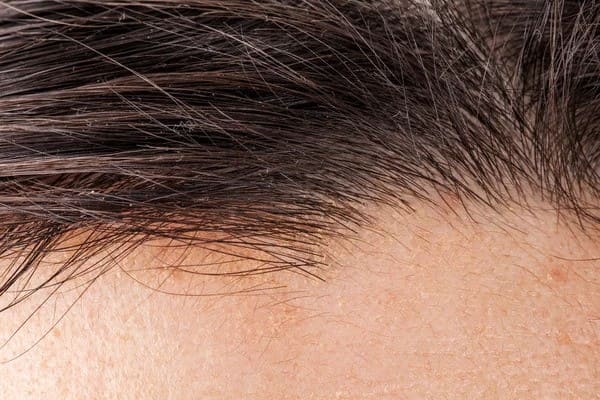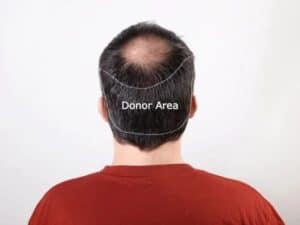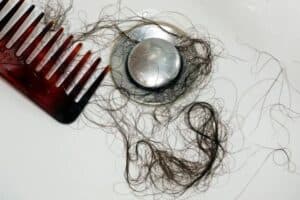How to Fix a Poor Hair Transplant Result
Have you had a poor hair transplant in the last 12 months and looking to fix it? If your previous hair transplant hasn’t gone to plan, you can find everything you need about hair transplant repair surgery on this page.
Overview
Hair transplant repair surgery can sometimes take place when a patient receives an unsatisfactory result from their first procedure. Repair surgery can often be complex and costly, but it is possible if a patient has a sufficient donor area to accommodate a second surgical procedure.
First Things First: What is Hair Transplant Repair?
“Hair transplant repair” is the term given to the process for patients requiring a second surgery to resurrect a poor initial result. With it being estimated that over 700,000 hair transplants occur worldwide each year, it’s no surprise that a small number of cases do not go to plan and require a second surgery.
A poor hair transplant result may need to take place for several reasons. From anecdotal evidence, repair patients tend to come to our clinic after their first hair transplant has led to: insufficient coverage of the recipient site, poor implantation of grafts, unsightly scarring, and/or over-harvesting of the donor area.
The eligibility of hair transplant repair is always dependent upon each patient’s case. Each case considers the size and quality of the donor area, the quality of the initial result, and the size of the recipient area that (again) needs covering.
Why Do Hair Transplants Go Wrong in the First Place?
A hair transplant can go wrong for many reasons. However, in most cases, a poor result can be avoided by choosing a reputable clinic with experienced hair transplant surgeons. It is always wise to ask a potential hair transplant clinic exactly how much of the procedure is doctor performed as well.
In the UK, a hair transplant procedure needs to comply with stringent legislation to take place. A surgery needs to take place in a CQC-registered clinic and the procedure needs to (at the very least) have incisions performed by a doctor on the GMC medical register.
In other clinics across the globe, health and safety standards are not quite as stringent as in the UK. This leads to a small minority of procedures that take place in unhygienic clinics and are not performed by expert surgeons. Predictably, this is where the majority of poor hair transplant surgeries take place.
With a proper planning process, and making sure you can do your due diligence on the clinic performing your procedure, you can minimise the need for “hair transplant repair” in the future. If you’re considering an FUE hair transplant, we recommend you read our “Should I have a Hair Transplant in Turkey” page!
How Can I Minimise the Risk of Needing Hair Transplant Repair?
As stated above, doing your due diligence on the clinic performing your hair restoration surgery is the best way to go. As well as opting for surgery in the UK (guaranteeing CQC and GMC certification) you may also want to ask questions about the following issues.
First, you will want to ask how much of your hair transplant is going to be performed by your surgeon. For a procedure to be “doctor performed” a surgeon should (at the very least) perform the incisions themselves and oversee the technical team performing the implantation.
Reputable clinics with great surgeons are always happy to disclose how much of a hair transplant is doctor performs. The more of the procedure the doctor performs, the better the result of your hair transplant is likely to be!
Secondly, it is always wise to ask about the CQC certification of the clinic performing your procedure. Although all clinics need to be compliant with CQC regulations, it is always wise to have your surgery in a clinic rated “good” or “outstanding”. This can help to minimise any chance of infection post-surgery which, if caught, could mean you need a second surgery.
Why Do Patients Ask For Hair Transplant Repair?
If you have already had an initial surgery and need hair transplant repair, then your case will likely be down to the following reasons:
Insufficient Coverage of the Recipient Site
The main reason patients ask for a second hair transplant is because the result gained from the first surgery is not sufficient. A good hair transplant should leave the recipient area looking thick and full. It should also not be noticeable that a patient has had a hair transplant.
In a small number of cases, the density of results on the recipient site can be unsatisfactory, requiring a “top-up” surgery. This is where more grafts are taken from the donor area (back and sides of the head) to bolster and thicken the result from the initial surgery.
Poor Implantation of Grafts
A poor initial hair transplant can also occur when the donor hair grafts are implanted poorly. By not implanting the donor hair correctly, it becomes obvious to the untrained eye that a hair transplant has taken place. With this in mind, patients may once again suffer from low self-esteem.
“Poor implantation of grafts” is quite a broad term, but it generally refers to issues such as an unnatural hairline, grafts placed in the scalp the wrong way, or hair grafts cut off from the scalp’s blood supply.
To repair this poor result, poorly implanted grafts will need to be removed and more donor hair will need to be taken from the donor area. The need for extraction, as well as implantation, can lead to this repair job being quite costly for the patient.
Unsightly Scarring
Unsightly scarring after an initial surgery is often a difficult problem to diagnose and manage. Moreover, given the complex nature of scarring, this can affect a patient’s ability to have a second repair surgery.
In lucky cases, scarring from an initial procedure may eventually heal fully, enabling a patient to have a second surgery (even if a low number of grafts survive). However, conditions such as post-surgery keloid formation (common with afro hair transplants) or hypertrophic scars would rule out the possibility of repair surgery.
If a patient is unable to have a second surgery, then options such as scalp micro pigmentation may be viable. Over-harvesting of the Donor Area
How Can I Tell if I am Eligible for Hair Transplant Repair?
Eligibility for repair surgery is, as stated earlier in this article, dependent upon the quality of the donor area, recipient site, and the quality of the initial result.
If you’re unsure whether you’re eligible for a second surgery, be sure to book a free consultation with us. At Harley Street Hair Transplant Clinics, we’re always happy to talk to patients about hair transplant repair. The initial consultation is completely free.
What Instances Is Hair Transplant Repair Possible?
Unnatural Hairline Result
If a first hairline hair transplant has produced an unnatural-looking result, then a second hair transplant can repair this in most instances. A second hair transplant would be possible providing a patient has sufficient donor hair to support a second surgery.
A hairline repair surgery would aim to reshape the hairline area and provide enough density (if needed) so the frontal section of the head does not look sparse in appearance. A “successful” hairline surgery will also look symmetrical.
Low Density in Recipient Area
Hair transplant repair is usually possible when a patient has not received enough grafts in their recipient site to cover the initial balding. In these instances, patients may have been lied to by their previous hair transplant clinic on the number of grafts needed for their surgery.
Providing a patient has sufficient donor area to support a second surgery, then it should be possible. In larger two-stage cases where a third surgery may not be on the cards, then there are always alternative options. Treatments such as scalp micropigmentation (SMP) or platelet-rich plasma therapy (PRP) may be an option.
After a Previous Successful FUE or FUT Hair Transplant
This may seem obvious, but does need to be said. Having a previous hair transplant surgery does not rule you out of a second procedure in the future. This would be the case for direct hair implantation (DHI) follicular unit transplant (FUT) and follicular unit extraction (FUE).
If a patient has had a successful hair transplant in the past, it is not unusual to want surgery at some point in the future. Over 5-10 years post-surgery, a patient may suffer from pattern hair loss and want a top-up surgery.
Hair transplant procedures of this nature would be dependent upon the size and quality of the remaining donor area. The most likely procedure that could be used in this instance would be a FUE hair transplant.
What Would Rule Out the Possibility of a Second Hair Transplant?
In some cases where a bad hair transplant has taken place, a second surgery may not be possible. Before any repair surgery can take place, every case is taken at the discretion of the hair transplant surgeons taking on the repair work.
The common reasons why a hair transplant surgeon would turn down repair work would usually be due to the following reasons.
Patients Suffering With Keloids
One particular condition that would rule a patient out of a second surgery or repair work would be keloid formation. Keloids occur during the aftercare process and leave a patient with raised (sometimes inflamed) bumps under the transplanted hair follicles.
The main reason why someone with keloids may be denied a second/repair surgery is on the grounds of patient safety. As keloids are lumpy inflamed scars, they put the patient at a high risk of infection to conditions such as folliculitis.
As well as infection, scarring may also reduce the efficacy of the new hair grafts growing and is likely the reason why a patient is asking for repair surgery in the first place.
Over-harvesting of Donor Area
If a patient has had their donor area over-harvested during their first procedure, then there is little that can be done to rectify this. During a hair transplant surgery, you cannot extract and implant hair follicles from (and into) the same area.
Over-harvesting occurs when too many hair follicles are extracted from the donor area, leaving the back and sides of the head looking sparse and thin. This would be categorised as a bad hair transplant because it would be obvious to onlookers that a patient has had surgery.
If a donor area has been over-harvested, there are no real options a patient has to bolster and thicken this area. This is why it is important to do your due diligence before surgery, to choose a reputable clinic and avoid a bad hair transplant.
Conclusion
If your hair transplant procedure has not gone to plan, then a repair surgery may be able to take place. Usually, this is dependent upon the size and quality of the remaining donor area and the size of the recipient site for a second surgery.
To minimise the chance of needing a second hair transplant surgery, it is always wise to do your due diligence before choosing your hair transplant clinic. Preparation and prevention is always the best option!








